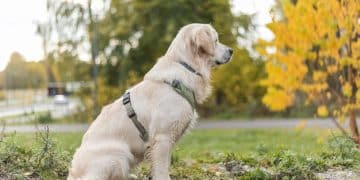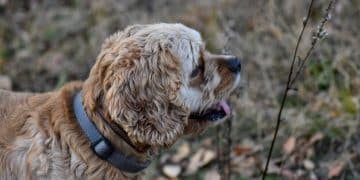How to Socialize Your Puppy Safely: Week-by-Week Guide
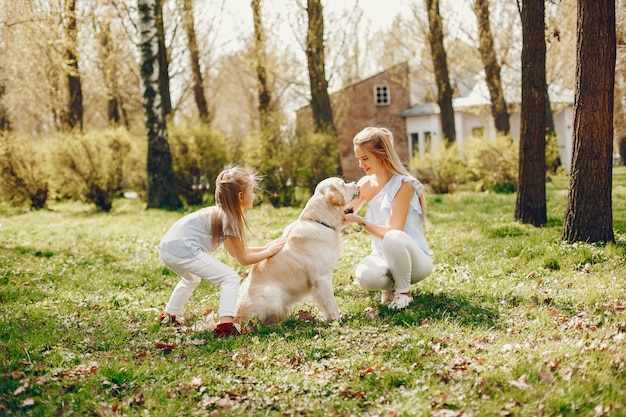
Anúncios
Socializing your puppy safely during their first 12 weeks is crucial for their development, involving gradual exposure to new sights, sounds, people, and experiences, while ensuring their comfort and safety to foster a well-adjusted and confident dog.
How to Socialize Your Puppy Safely: A Week-by-Week Guide for the First 12 Weeks is critical for their behavioral development. This guide will provide a comprehensive roadmap for safely introducing your puppy to various experiences, people, and environments, ensuring they grow into well-adjusted and confident companions.
Anúncios
Understanding the Importance of Early Socialization
Early socialization is the foundation of a well-behaved, confident, and happy dog. Exposing your puppy to a variety of experiences during their crucial developmental period, which spans roughly from 3 to 16 weeks, helps them develop into a well-rounded adult dog.
Why Socialization Matters
Socialization is not just about exposing your puppy to other dogs; it involves introducing them to a wide range of stimuli, including people of different ages, appearances, and abilities, various sounds, sights, and environments. This early exposure helps prevent fear and aggression later in life.
Anúncios
Proper socialization can mitigate potential behavioral issues, such as anxiety, fearfulness, and aggression. A well-socialized puppy is more likely to be confident and adaptable, making them a joy to have around.
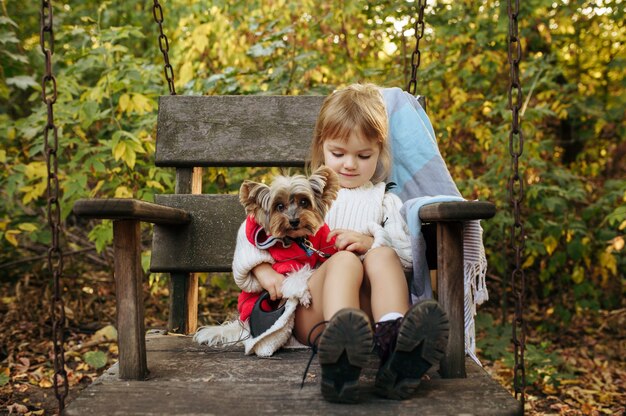
There are many aspects that must be consider during the processes of socializing your puppy:
- Prevents Behavioral Problems: Early exposure to various stimuli reduces the likelihood of developing fear or aggression-based issues.
- Builds Confidence: Positive interactions during the socialization period help your puppy become self-assured in new environments.
- Enhances Adaptability: Socialized puppies are more likely to adapt to changes in their environment, such as moving to a new home or meeting new people.
- Improves Overall Well-being: Proper socialization contributes to a happier, more relaxed, and well-adjusted dog.
Ultimately, early socialization is an investment in your puppy’s future, leading to a happier and healthier life for both you and your furry friend.
Week 1-3: Laying the Foundation at Home
The first few weeks of a puppy’s life are critical for their development, however before three weeks of age, the puppy should stay with their mother. This time is primarily focused on bonding and establishing a sense of security in their immediate environment. Although formal socialization hasn’t begun, you can start laying the groundwork for future positive experiences.
Creating a Safe and Comfortable Environment
Begin by creating a safe and comfortable space for your puppy. Ensure they have a cozy bed, plenty of soft toys, and access to fresh water. This secure environment will serve as their home base as they begin to explore the world around them.
Introduce your puppy to gentle handling early on. Regularly pick them up, pet them, and examine their paws and ears. This helps them become comfortable with human touch, which is essential for future grooming and veterinary visits.
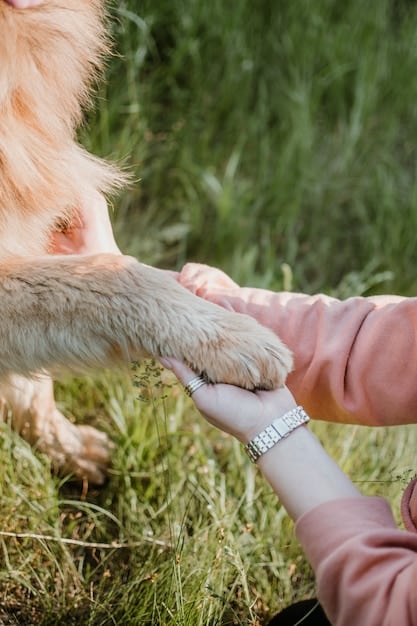
Here are some ways to create a good environment for your puppy:
- Gentle Handling: Get your puppy used to being touched and handled gently.
- Safe Space: Create a secure and comfortable environment for your puppy.
- Introduce Sounds: Begin exposing your puppy to everyday household sounds.
- Positive Reinforcement: Use treats and praise to create positive associations.
By laying this foundation in the early weeks, you’re setting the stage for a successful and confident socialization journey.
Week 4-6: Introducing New Sights and Sounds
As your puppy enters weeks 4 through 6, they become more aware of their surroundings. This is an excellent time to introduce them to new sights and sounds in a controlled and positive manner.
Expanding Their World
Start by exposing your puppy to various household sounds, such as the television, vacuum cleaner, and washing machine. Play these sounds at a low volume initially and gradually increase the volume as your puppy becomes more comfortable.
Introduce your puppy to different areas of your home, allowing them to explore and investigate at their own pace. Make sure to supervise them closely to prevent accidents and ensure their safety.
Some tips to ease this process are listed below:
- Household Sounds: Acclimate your puppy to everyday noises like the TV and vacuum cleaner.
- Different Rooms: Allow your puppy to explore different areas of your home under supervision.
- Visual Stimuli: Introduce your puppy to various visual stimuli, such as different objects and environments.
- Positive Experiences: Pair new experiences with treats and positive reinforcement.
By carefully introducing your puppy to new sights and sounds, you’re helping them build confidence and resilience, making them more adaptable to future experiences.
Week 7-9: Meeting New People
Between 7 and 9 weeks, your puppy should start meeting new people. This is an important step in their socialization process, as it helps them learn to interact appropriately with humans.
Safe and Positive Interactions
Arrange for your puppy to meet people of different ages, genders, and appearances. Encourage visitors to approach your puppy calmly and offer gentle pets and treats. This helps create positive associations with new faces.
Expose your puppy to people wearing hats, glasses, or using walking aids. This can help prevent them from developing fear or anxiety towards individuals with these characteristics. The more varied the socialization, the better.
Here are some people you should introduce your puppy to:
- Various Ages: Ensure your puppy meets children, adults, and seniors.
- Different Appearances: Introduce them to people wearing hats, glasses, or using walking aids.
- Positive Reinforcement: Encourage visitors to offer treats and gentle pets.
- Controlled Environments: Make sure interactions are calm and supervised.
By ensuring safe and positive interactions with a variety of people, you’re helping your puppy develop into a well-adjusted and friendly companion.
Week 10-12: Exploring the Great Outdoors
By weeks 10 to 12, your puppy is ready to explore the great outdoors. This is a crucial phase for exposing them to different environments, sounds, and experiences beyond the confines of your home.
Gradual Outdoor Exposure
Start by taking your puppy for short walks in quiet, safe areas. As they become more comfortable, gradually introduce them to busier environments, such as parks and sidewalks.
Expose your puppy to different surfaces, such as grass, concrete, and gravel. This helps them become accustomed to walking on various terrains and enhances their confidence. Also introduce them to different vehicles, bikes and other cars driving by.
Here are some steps to take when introducing your puppy to the outdoors:
- Short Walks: Begin with short walks in quiet, safe areas.
- Different Surfaces: Expose your puppy to grass, concrete, and gravel.
- Outdoor Sounds: Acclimate your puppy to traffic, sirens, and other outdoor noises.
- Positive Reinforcement: Reward your puppy with treats and praise during outdoor excursions.
By gradually introducing your puppy to the great outdoors, you’re helping them become confident and well-behaved in a variety of environments.
Important Considerations for Safe Socialization
While socializing your puppy is essential, it’s equally important to ensure their safety and well-being throughout the process. Always prioritize positive experiences and avoid overwhelming your puppy with too much too soon.
Health and Vaccination Status
Before exposing your puppy to other dogs or public areas, ensure they have received their initial vaccinations. Consult with your veterinarian to determine the appropriate vaccination schedule for your puppy.
Keep your puppy on a leash and harness during outdoor excursions to prevent them from running off or encountering potentially dangerous situations. Utilize positive reinforcement techniques, such as treats and praise, to reward their good behavior.
In order to keep your puppy safe, you can also:
- Vaccination Schedule: Follow your veterinarian’s recommended vaccination schedule.
- Leash and Harness: Keep your puppy safely leashed during outdoor excursions.
- Positive Reinforcement: Reward good behavior with treats and praise.
- Supervision: Always supervise your puppy during socialization activities.
By keeping these considerations in mind, you can create a safe and enjoyable socialization experience that sets your puppy up for a lifetime of happiness and well-being.
Monitoring Your Puppy’s Behavior
Throughout the socialization process, it’s crucial to monitor your puppy’s behavior closely. Pay attention to their body language and adjust your approach accordingly to ensure they remain comfortable and confident.
Signs of Stress
Be aware of the signs of stress in your puppy, such as panting, lip licking, yawning, or tail tucking. If your puppy exhibits these behaviors, remove them from the situation and allow them to relax in a safe and comfortable environment.
Always allow your puppy to approach new experiences at their own pace. Avoid forcing them into situations that make them uncomfortable. Positive reinforcement, such as treats and praise, can help them build confidence and overcome their fears.
If you puppy begins to display signs of stress, consider the following:
- Body Language: Watch for signs of stress, such as lip licking, yawning, or tail tucking.
- Pacing: Allow your puppy to approach new experiences at their own pace.
- Positive Experiences: Focus on creating positive associations and avoid overwhelming your puppy.
- Professional Help: Consult with a professional trainer or behaviorist if you encounter significant challenges.
By closely monitoring your puppy’s behavior and adjusting your approach accordingly, you can create a positive and successful socialization experience.
| Key Point | Brief Description |
|---|---|
| 🏠 Safe Environment | Create a secure space with a cozy bed and fresh water. |
| 🧑🤝🧑 Meeting People | Introduce your puppy to people of various ages and appearances. |
| 🌳 Outdoor Exploration | Take your puppy for short walks in quiet, safe areas. |
| ❤️ Positive Reinforcement | Use treats and praise to reward good behavior and build confidence. |
Frequently Asked Questions
▼
Socialization helps puppies become well-adjusted adults by exposing them to various stimuli and experiences, preventing fear and aggression later in life.
▼
You should start socializing your puppy between 3 to 16 weeks of age, as this is their critical developmental period for learning and adapting to new environments.
▼
Encourage visitors to approach your puppy calmly, offer gentle pets, and provide treats. Always supervise interactions to ensure they remain positive and stress-free.
▼
Signs of stress include panting, lip licking, yawning, tail tucking, and attempts to escape the situation. If you notice these, remove your puppy from the situation immediately.
▼
It’s best to consult your vet prior. If they say it’s okay, limit exposure to controlled environments. Ensure your puppy has received their initial vaccinations before any public areas.
Conclusion
Successfully socializing your puppy within the first 12 weeks will set the stage for a lifetime of confidence, happiness, and well-adjusted behavior. By following this week-by-week guide and remaining attentive to your puppy’s needs, you’ll be well on your way to raising a well-behaved and friendly companion.

